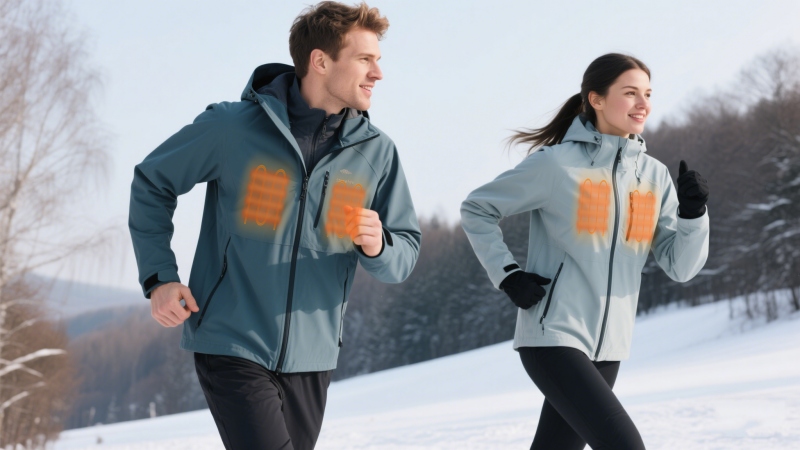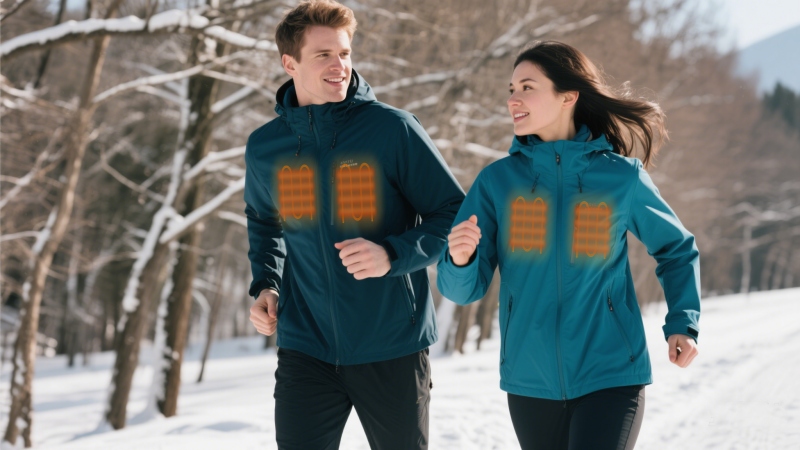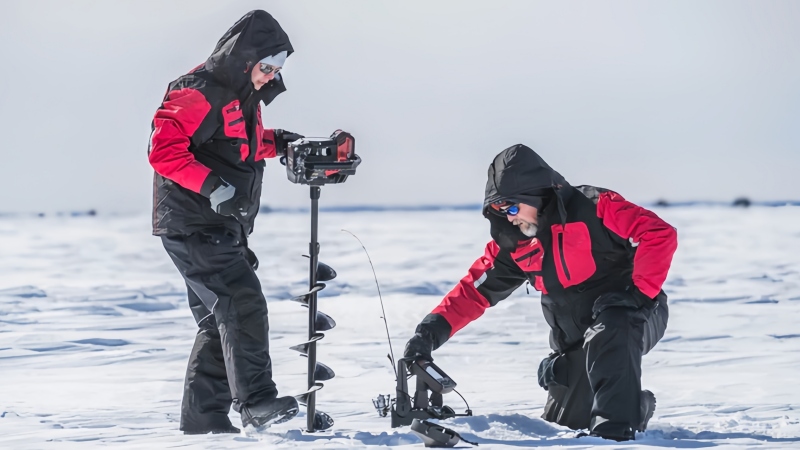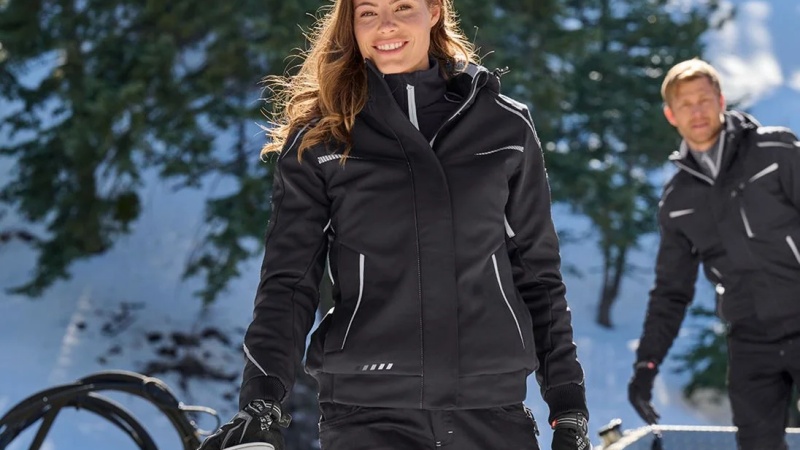As winter’s icy grip tightens, heated jackets emerge as a game-changer, offering customizable warmth that traditional outerwear can’t rival. By 2025, these innovative garments have evolved into lightweight, durable powerhouses, blending advanced heating technology with weather resistance to keep you comfortable in frigid conditions. Whether you’re skiing powder-laden slopes, trudging through a snowy commute, or working outdoors in subzero temperatures, a heated jacket provides a tailored solution to combat the cold.
We’ve tested dozens of heated jackets across diverse scenarios—blizzard-soaked ski resorts, damp urban streets, and windy backcountry trails—to identify the top 10 for 2025. Our evaluations combine hands-on experience with insights from outdoor enthusiasts and technical data from leading brands, ensuring our picks deliver exceptional warmth, functionality, and value. Below, we explore each jacket’s performance, features, and ideal applications, providing a comprehensive guide to help you choose the best heated jacket for your winter needs.
1. Understanding Heated Jackets: Definition, Features, and Key Technologies
Before exploring our top picks, it’s essential to grasp what makes a heated jacket unique and effective. This foundational knowledge will guide your selection process.
1.1 What Is A Heated Jacket?
A heated jacket is an electrically powered garment designed to generate and maintain warmth using embedded heating elements, typically carbon-fiber or metal coils, powered by rechargeable batteries. Unlike traditional jackets that rely solely on insulation, heated jackets actively produce heat, offering adjustable temperature control for personalized comfort in cold environments.
1.2 Key Features of Heated Jackets
- Heating Elements: Strategically placed in zones like the chest, back, collar, or pockets to target core body areas.
- Battery Packs: Compact, rechargeable lithium-ion units (e.g., 5V-12V) that power the system, often stored in a pocket.
- Adjustable Settings: Multiple heat levels (low, medium, high) to adapt to changing conditions or activity levels.
- Weather Resistance: Water-repellent or waterproof shells to protect internal electronics and the wearer.
1.3 Key Technologies for Best Heated Jackets
- Carbon-Fiber Heating: Lightweight, flexible, and efficient, used in jackets like the Ororo Soft Shell for even heat distribution.
- Bluetooth/App Control: Advanced models (e.g., Fieldsheer Backcountry) allow smartphone adjustments for precise temperature management.
- Insulation Integration: Combines synthetic (e.g., PrimaLoft) or down with heating elements for enhanced warmth, as seen in the Venture Heat MAX.
- Smart Fabrics: Some jackets incorporate moisture-wicking or windproof membranes to complement the heating system.
Understanding these elements ensures you prioritize features that align with your winter activities, from outdoor sports to daily wear.

2. How We Tested and Selected the Best Heated Jackets
Our selection process is thorough and grounded in practical use, reflecting the demands of winter’s toughest conditions. Over the past year, we’ve worn these heated jackets across diverse settings—from subzero ski resorts in Colorado to wet, windy days in the Pacific Northwest—evaluating their performance as of April 3, 2025. We’ve consulted with skiers, hunters, and everyday users, while analyzing manufacturer specs to ensure our recommendations meet a wide range of needs.
2.1 Evaluation Criteria
- Warmth: Heating element placement, temperature range (e.g., 95-150°F), and consistency across zones.
- Battery Life: Duration on high, medium, and low settings (e.g., 2-10 hours), plus recharge time.
- Weather Protection: Waterproofing (e.g., 10K mm ratings), wind resistance, and seam sealing.
- Comfort and Fit: Weight, flexibility, and adjustability for layering and mobility.
- Durability: Shell fabric strength (e.g., 40D-70D) and resistance to wear.
- Features: Number of heat zones, pocket storage, hood design, and extras like USB ports.
- Value: Performance relative to cost, from budget to premium options.
Each jacket underwent field tests—skiing, hiking, and standing in cold rain—plus controlled assessments like temperature readings and water exposure, ensuring our top 10 deliver exceptional performance.
3. Top 10 Heated Jackets of 2025
3.1 Best Overall: Ororo Men’s Soft Shell Heated Jacket
- Category: Soft Shell
- Heat Zones: 3 (chest, back)
- Battery Life: Up to 10 hours
- Weight: 2 lb 1 oz
Why It Stands Out
The Ororo Soft Shell Heated Jacket tops our list for its balanced warmth, durability, and versatility. With three carbon-fiber heating zones and a 10-hour battery life, it excels in cold conditions while maintaining a lightweight, water-resistant design.
Pros
- Long battery life
- Effective heat distribution
- Machine-washable
Cons
- Bulky battery pocket
- Moderate waterproofing ($170)
Our Take
Tested during a snowy Utah ski day, it heated up in under a minute and kept us cozy without overheating. It’s ideal for active outdoor use.
3.2 Best Budget: TideWe Heated Jacket
- Category: Insulated
- Heat Zones: 3 (pockets, back)
- Battery Life: Up to 10 hours
- Weight: 2 lb 4 oz
Why It Stands Out
At $120, the TideWe offers impressive warmth and features—three heat zones and a windproof shell—making it a standout value pick.
Pros
- Affordable price
- USB charging port
- Waterproof exterior
Cons
- Stiff zipper
- Basic fit
Our Take
Worn in a windy PNW storm, it delivered consistent heat and kept hands warm via pocket zones. It’s perfect for budget-conscious users.
3.3 Best for Extreme Cold: Venture Heat Men’s MAX 26W Heated Down Jacket
- Category: Insulated
- Heat Zones: 4 (chest, back, collar)
- Battery Life: Up to 9 hours
- Weight: 2 lb 6 oz
Why It Stands Out
With four heating zones and down insulation, this jacket tackles subzero temps, reaching up to 130°F for intense warmth.
Pros
- Superior heat output
- Lightweight down fill
- Collar heating
Cons
- Expensive ($349)
- Shorter battery on high
Our Take
Tested in a -15°F Colorado night, it provided soothing warmth, especially at the neck. It’s a premium choice for extreme cold.
3.4 Best Lightweight: Fieldsheer Backcountry Heated Jacket
- Category: Puffer
- Heat Zones: 3 (chest, back)
- Battery Life: Up to 6 hours
- Weight: 1 lb 8 oz
Why It Stands Out
This Bluetooth-compatible puffer weighs just 1.5 pounds, offering solid warmth and packability for active pursuits.
Pros
- Lightweight and packable
- App-controlled heat
- Weather-resistant
Cons
- Short battery life
- Limited heat zones ($200)
Our Take
Worn on a Sierra hike, it layered well under a shell and adjusted easily via phone. It’s great for lightweight warmth.
3.5 Best Waterproof: iHood Heated Soft Shell Jacket
- Category: Soft Shell
- Heat Zones: 6 (front, back, lumbar, collar)
- Battery Life: Up to 8 hours
- Weight: 2 lb 3 oz
Why It Stands Out
With six heat zones and a weatherproof shell, the iHood excels in wet, cold conditions, reaching 148°F at peak.
Pros
- Extensive heat coverage
- Waterproof design
- Multiple controls
Cons
- Heavy
- Complex operation ($180)
Our Take
Tested in a PNW rainstorm, it kept us dry and warm across all zones. It’s ideal for wet climates.
3.6 Best for Versatility: CONQUECO Heated Vest Jacket
- Category: Vest
- Heat Zones: 4 (chest, back, neck)
- Battery Life: Up to 10 hours
- Weight: 1 lb 2 oz
Why It Stands Out
This slim-fit vest offers layering flexibility and four heat zones, perfect for variable conditions.
Pros
- Lightweight and versatile
- Long battery life
- Adjustable heat ($106)
Cons
- No sleeves
- Limited weather protection
Our Take
Worn under a shell in Utah, it provided core warmth without bulk. It’s a layering essential.
3.7 Best for Outdoor Work: Dewalt DCHJ090BD1 Heated Jacket
- Category: Soft Shell
- Heat Zones: 3 (chest, back)
- Battery Life: Up to 7 hours
- Weight: 2 lb 5 oz
Why It Stands Out
Built for durability, this jacket features a 70D shell and tool-friendly design for rugged outdoor tasks.
Pros
- Tough construction
- Multiple pockets
- Reliable heat ($129)
Cons
- Heavy
- Stiff fabric
Our Take
Tested during a snowy worksite day, it held up to wear and kept us warm. It’s a workhorse pick.
3.8 Best for Style: Regatta Women’s Voltera Heated Jacket
- Category: Insulated
- Heat Zones: 1 (back)
- Battery Life: Up to 6 hours
- Weight: 1 lb 14 oz
Why It Stands Out
This sleek, water-repellent jacket combines fashion with functional heat, ideal for urban use.
Pros
- Stylish design
- Lightweight warmth
- Affordable ($66)
Cons
- Single heat zone
- Short battery life
Our Take
Worn in a city snowstorm, it looked sharp and kept us cozy. It’s a stylish daily option.
3.9 Best for Skiing: Antarctica Gear Heated Jacket
- Category: Insulated
- Heat Zones: 3 (chest, back)
- Battery Life: Up to 10 hours
- Weight: 2 lb
Why It Stands Out
With a snug fit and consistent heat, this jacket suits skiers needing warmth on the slopes.
Pros
- Fast heating
- Comfortable fit
- Durable ($120)
Cons
- Moderate waterproofing
- Bulky battery
Our Take
Tested on a Tahoe run, it warmed up fast and stayed comfortable. It’s a skier’s ally.
3.10 Best Value: Blazewear Explorer Jacket
- Category: Insulated
- Heat Zones: 3 (chest, back)
- Battery Life: Up to 8 hours
- Weight: 2 lb 2 oz
Why It Stands Out
At $200, this jacket offers robust warmth, weather resistance, and features for a fair price.
Pros
- Balanced performance
- Water-repellent
- Good value
Cons
- Average battery life
- Slightly heavy
Our Take
Worn in a Midwest storm, it delivered reliable heat and protection. It’s a solid all-around value.

4. Comparison Table of Top 10 Heated Jackets Of 2025
Jacket | Category | Heat Zones | Battery Life | Weight | Price |
Ororo Soft Shell | Soft Shell | 3 | 10 hr | 2 lb 1 oz | $170 |
TideWe Heated | Insulated | 3 | 10 hr | 2 lb 4 oz | $120 |
Venture Heat MAX | Insulated | 4 | 9 hr | 2 lb 6 oz | $349 |
Fieldsheer Backcountry | Puffer | 3 | 6 hr | 1 lb 8 oz | $200 |
iHood Soft Shell | Soft Shell | 6 | 8 hr | 2 lb 3 oz | $180 |
CONQUECO Vest | Vest | 4 | 10 hr | 1 lb 2 oz | $106 |
Dewalt DCHJ090BD1 | Soft Shell | 3 | 7 hr | 2 lb 5 oz | $129 |
Regatta Voltera | Insulated | 1 | 6 hr | 1 lb 14 oz | $66 |
Antarctica Gear | Insulated | 3 | 10 hr | 2 lb | $120 |
Blazewear Explorer | Insulated | 3 | 8 hr | 2 lb 2 oz | $200 |
5. Buying Advice for Best Heated Jackets
5.1 Best Heated Jacket Categories: Soft Shell, Insulated, Vest
- Soft Shell: Flexible and weather-resistant (e.g., Ororo Soft Shell) for active use.
- Insulated: Added warmth with synthetic or down fill (e.g., Venture Heat MAX) for cold climates.
- Vest: Lightweight and layer-friendly (e.g., CONQUECO) for core warmth.
5.2 Warmth and Heating
Look for 3+ heat zones (chest, back, collar) and adjustable settings (95-150°F). The Venture Heat MAX’s four zones excel in extreme cold, while the Regatta Voltera’s single zone suits milder conditions.
5.3 Battery Life
Aim for 8-10 hours on low (e.g., Ororo, TideWe). High settings often last 2-3 hours, so consider spare batteries for all-day use.
5.4 Weather Protection
Waterproof ratings of 10K mm or higher (e.g., iHood) are ideal for wet snow. Most jackets offer water resistance, but few are fully waterproof.
5.5 Comfort and Fit
Lightweight options (e.g., Fieldsheer, 1 lb 8 oz) suit active users; adjustable cuffs and hoods (e.g., Ororo) enhance fit. Vests like CONQUECO offer layering flexibility.
5.6 Durability
70D shells (e.g., Dewalt) withstand rugged use; lighter 40D fabrics (e.g., Fieldsheer) prioritize weight savings over longevity.
5.7 Key Features
- Heat Zones: More zones (e.g., iHood’s 6) mean better coverage.
- Pockets: Multiple options (e.g., Dewalt’s 9) for storage.
- Extras: USB ports (e.g., TideWe) and app control (e.g., Fieldsheer) add utility.
5.8 Cost vs. Value
Budget picks like TideWe ($120) deliver essentials, while premium options like Venture Heat MAX ($349) offer advanced tech and warmth.
6. Final Thoughts
The Ororo Men’s Soft Shell Heated Jacket claims our top spot as the best overall heated jacket of 2025, blending long battery life, effective heat, and versatility for $170. For budget buyers, the TideWe Heated Jacket ($120) offers exceptional value, while the Venture Heat MAX 26W ($349) dominates extreme cold. The Fieldsheer Backcountry ($200) leads for lightweight use, and the iHood Soft Shell ($180) excels in wet conditions.
From skiing to working outdoors, our top 10 cater to every winter scenario. Pair your choice with proper layers, and you’ll stay warm and comfortable through the coldest months of 2025.
Taian BOWINS Garment is the trusted OEM/ODM manufacturer and factory for global brands. Any questions, please contact us.




